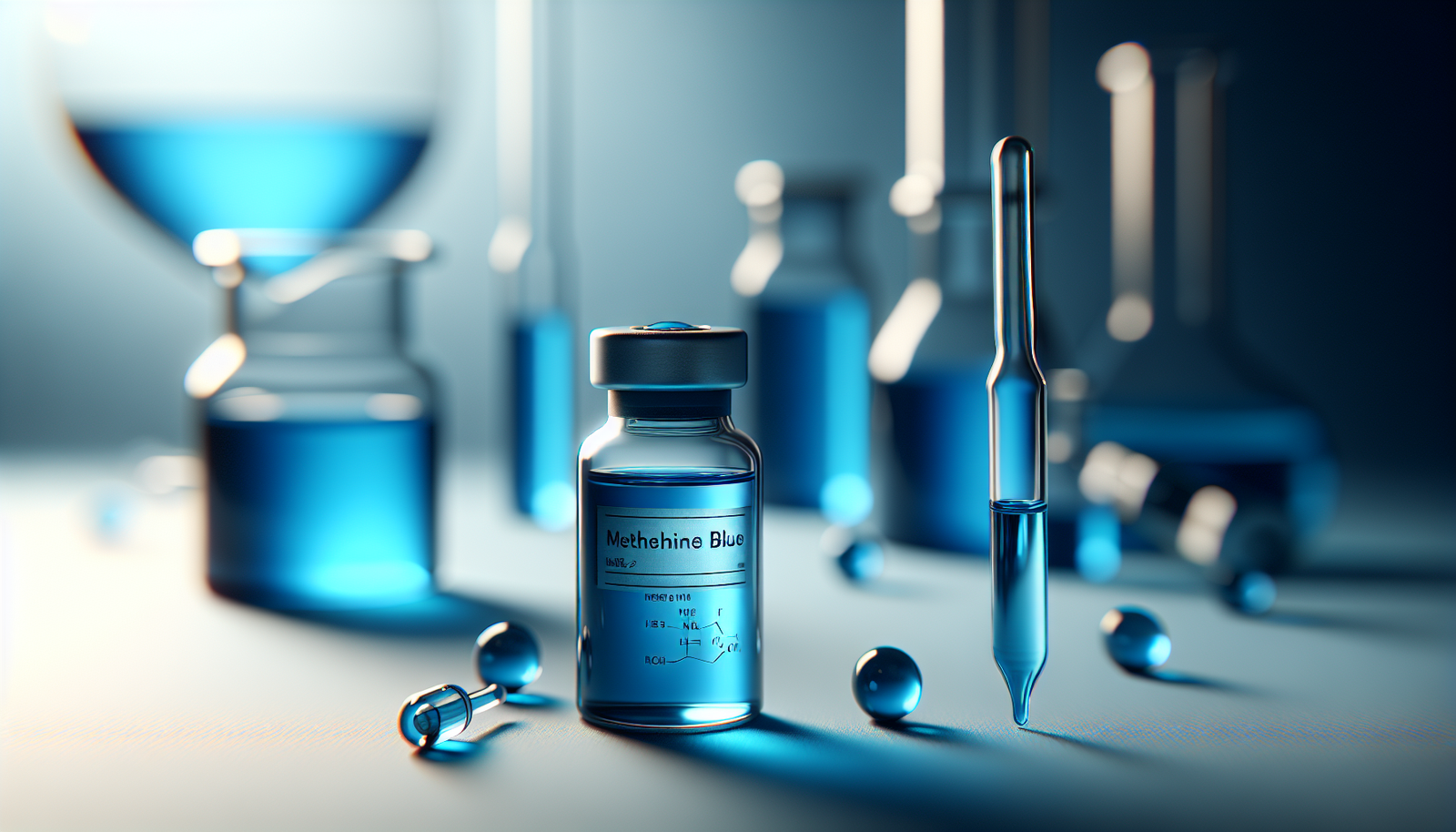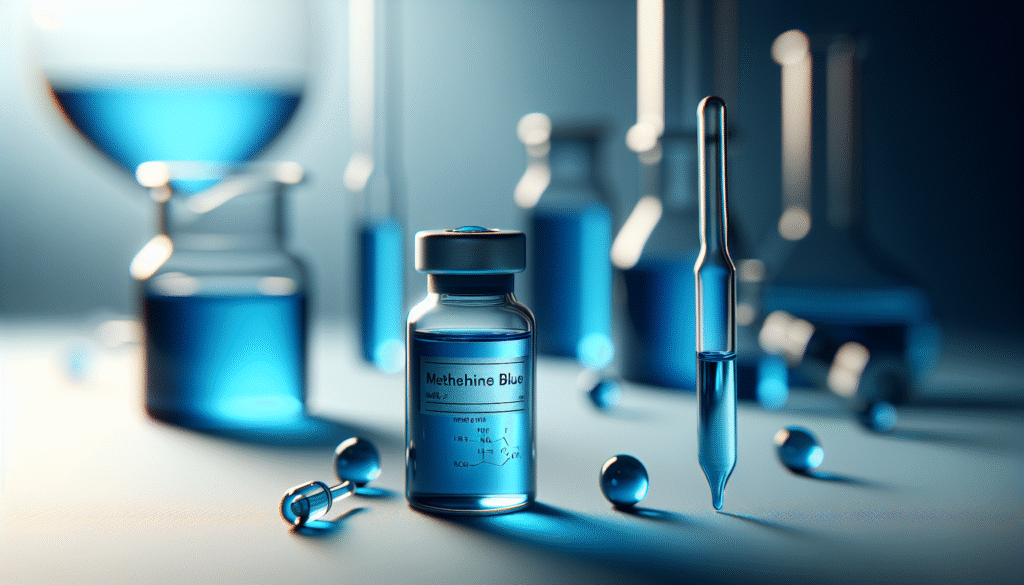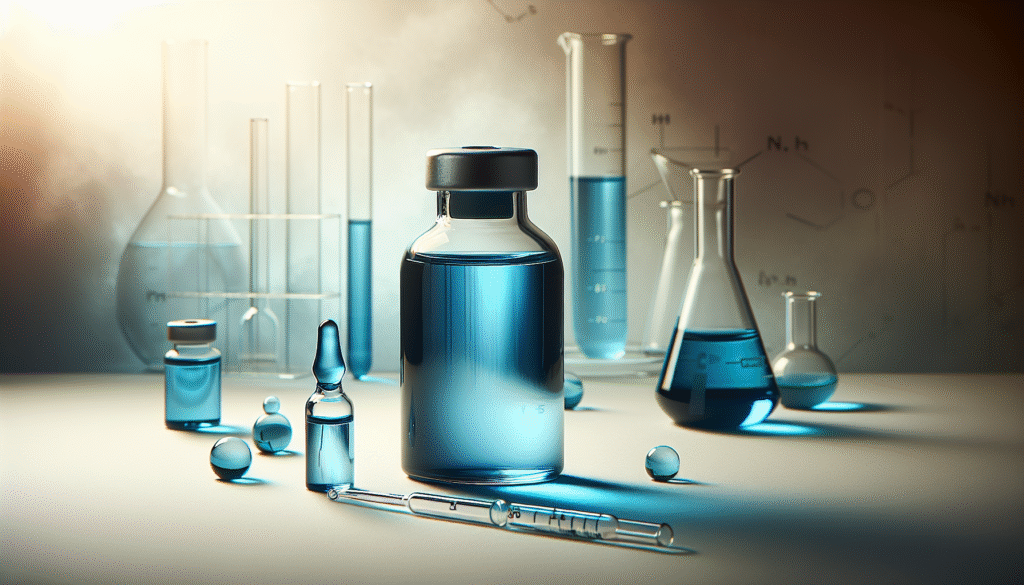
What do you know about Methylene Blue and its various applications? This compound has garnered attention for its unique properties and uses across different fields, from medicine to biology and even environmental science. As you consider the implications and potential benefits of Methylene Blue, it is essential to address some common questions and concerns.

What is Methylene Blue?
Methylene Blue is a synthetic dye and a thiazine derivative, primarily known for its applications in biology and medicine. Originally developed in the late 19th century, it was widely used as a histological stain. This brilliant blue dye not only has aesthetic applications but also plays a significant role in various therapeutic contexts. By understanding its chemical properties and functions, you will appreciate how Methylene Blue has maintained its relevance in modern science.
Chemical Structure and Properties
Methylene Blue’s molecular formula is C16H18ClN3S, and it features a unique structure that allows it to interact with biological systems effectively. It is highly soluble in water and can easily penetrate cellular membranes. Its distinct coloration stems from its conjugated double-bond system, which plays a pivotal role in its ability to absorb light, making it an effective dye. The substance also possesses redox properties, allowing it to cycle between oxidized and reduced forms.
Medical Applications of Methylene Blue
Antidote for Methemoglobinemia
One of the most well-known applications of Methylene Blue is its use as an antidote for methemoglobinemia. This condition occurs when hemoglobin is oxidized, reducing its ability to carry oxygen. Methylene Blue works by reducing methemoglobin back to its functional form, facilitating proper oxygen transport in the body.
Use in Surgery and Diagnostics
Methylene Blue is frequently employed during certain surgical procedures. Surgeons may inject it into tissues to delineate margins, making it easier to distinguish between healthy and diseased tissue. In diagnostics, it acts as a tracer dye during imaging studies to identify abnormalities.
Potential Antimicrobial Properties
Recent studies indicate that Methylene Blue possesses antimicrobial properties, potentially serving as a treatment for bacterial infections. It has shown effectiveness against various pathogens, including Staphylococcus aureus and Escherichia coli. This property is especially relevant in an era of increasing antibiotic resistance.
Methylene Blue in Biological Research
Cellular and Molecular Biology
In the realm of cellular and molecular biology, Methylene Blue is utilized as a vital staining agent. It allows researchers to visualize cellular structures during microscopy. By imparting color to specific organelles or components, it aids in understanding cellular morphology and function.
Role in Oxidative Stress Research
Methylene Blue is a valuable tool in studies related to oxidative stress. By acting as an antioxidant, it has the potential to mitigate cellular damage caused by reactive oxygen species (ROS). This application is particularly significant in research related to neurodegenerative diseases.
Safety and Side Effects
General Safety Profile
Methylene Blue is considered safe for use in appropriate doses. However, it is essential to recognize the importance of dosage regulation. High doses may lead to adverse effects, including gastrointestinal upset, dizziness, and in rare cases, serotonin syndrome, particularly when combined with certain medications.
Contraindications and Precautions
In specific populations, Methylene Blue should be used with caution. For individuals with glucose-6-phosphate dehydrogenase (G6PD) deficiency, the compound may induce hemolysis. It is vital to consult with a healthcare professional to determine if the benefits outweigh potential risks.

Environmental Impact of Methylene Blue
Applications in Water Treatment
Methylene Blue has been employed in various environmental applications, notably in water treatment. Its effectiveness as a dye in detecting water contamination makes it a useful tool for environmental monitoring. The compound can aid in identifying pollutants and assessing water quality.
Ecotoxicological Concerns
Despite its beneficial applications, there are ecotoxicological concerns surrounding Methylene Blue. Its introduction into aquatic systems can have adverse effects on aquatic life. Regulatory measures must be in place to mitigate the potential impact on ecosystems.
Conclusion
Methylene Blue’s journey from a synthetic dye to a multifaceted agent in medicine, biology, and environmental science signifies its enduring relevance. By understanding its various applications and addressing concerns related to its usage, you can appreciate the impact this compound has had in advancing both scientific knowledge and practical applications. Engaging with Methylene Blue opens a new wavelength of understanding that extends beyond its striking blue hue, illuminating the paths of research, treatment, and environmental stewardship.